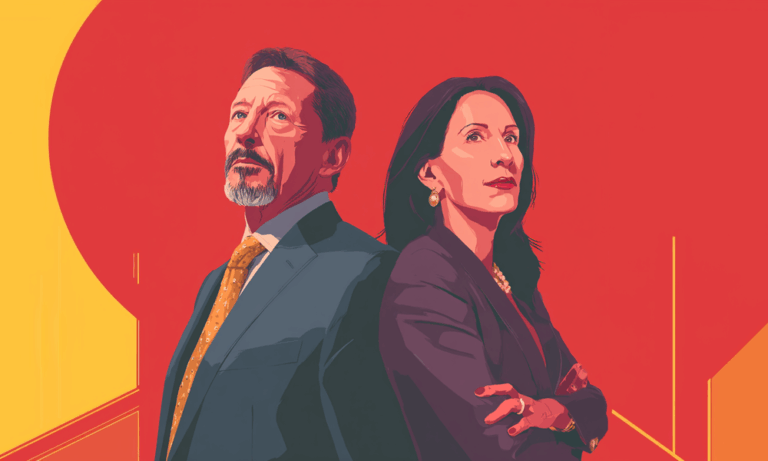Unmasking Anger: Do Women have the right to get Angry (just like Men)?

Yes, you can. You can show your anger at work. However, depending on whether you are a women or a man, it will be interpreted differently. Research is not very forthcoming on the subject. As such, we have conducted an investigation among managers of both sexes.
Picture this: a tense team meeting running high. A male leader raises his voice. Now imagine a female leader doing the same. Do you really think their anger will be perceived in the same way?
Although emotions play a critical role in leadership, there has been limited research on how male and female leaders are judged differently when they express anger. Unconscious biases remain strong in the social gendered representations.
Deep roots
These biases are the source of the stereotypes or preconceived ideas that people hold without realizing. They can affect how we make decisions, behave and interact with others, and may lead to unfair treatment in the workplace.
The roots of this bias run deep. Historically, society has associated emotionality with femininity and rationality with masculinity. Men have long been expected to be assertive and dominant, while women are expected to be nurturing and accommodating. These stereotypes heavily influence how we perceive emotions, especially anger, in professional settings.
Studies indicate that women who express anger in professional settings are often judged more harshly than men. For instance, the study by Brescoll & Uhlmann (2008) found that women who express anger in professional settings are often perceived as less competent, while men who express anger are perceived as more competent and higher in status. This bias affects women’s evaluations and career advancements.
“People often question if I’m on my period”
In our quest to understand the practical consequences of gender biases in the perception of anger, we interviewed 8 leaders and managers, 3 men and 5 women, from different professional fields and geographical locations within the gas industry to get their take on how anger is perceived based on gender. Their testimonies unveiled troubling yet telling patterns.
One female leader described her struggle: “I have a very direct personality. My communication is straightforward, and my face often shows my emotions. Filtering them is difficult.” This constant need to moderate expressions of anger to avoid negative labels adds significant pressure.
Another female respondent said: “When I get angry, people often question if I’m on my period, which diminishes my leadership skills.” This kind of bias forces women to suppress their true feelings, leading to increased stress and decreased job satisfaction.
The male advantage
Male leaders’ anger is often perceived differently than that of female leaders. Our interviews revealed some striking differences in how male anger is viewed, often in a more favorable light compared to female anger.
Several interviewees shared that when men show anger, it can sometimes be seen as a sign of strength and authority. One respondent pointed out that anger from men might be viewed as assertiveness or passion for the job, giving them an edge in leadership roles. This societal bias can make male leaders appear more dedicated and committed.
Read also: Sexual Harassment: three wise Human resources
“Anger itself isn’t inherently bad; it’s the reaction it creates that can be problematic. Sometimes, anger can spark necessary changes or shine a light on prominent issues”, one interviewee remarked. This highlights that while male anger can have a constructive side, it’s all about how it’s managed.
Nevertheless, it’s important to note that men also face pressure to conform to traditional gender roles. A report by the American Psychological Association (APA, 2018) highlights that men are often socialized to suppress emotions perceived as weak, such as sadness or fear, which can lead to increased stress and mental health issues.
Organizational silence
Despite policies aimed at ensuring fairness, practical application often falls short. Many organizations remain silent on the issue of gender perceptions of anger. One female leader commented, “there’s a lot of talk about equality, but in practice, these biases are still very much present.”
This silence perpetuates the status quo and prevents meaningful change. Organizations often lack proactive measures to address these biases, leaving female leaders to navigate these challenges alone. Without explicit support and training, the burden of managing these perceptions falls on the individuals affected by them. This lack of action from the organizational level indicates an acceptance of the current state, further reinforcing these biases.
Transforming leadership and mitigating biases
Creating a dynamic and inclusive leadership culture starts with training programs and support systems. These initiatives are essential in raising awareness about unconscious biases, promoting emotional intelligence, and developing cultural competence among leaders and employees. Here’s how organizations can make a meaningful impact:
Unconscious Bias Training:
Helping leaders and employees recognize and mitigate their own biases can foster a more equitable workplace. Such training can uncover hidden biases that influence daily interactions and decision-making processes, facilitating real change.
Emotional Intelligence Development:
Emotional intelligence is crucial for effective leadership. Training programs that focus on enhancing emotional intelligence equip leaders with the ability to manage their emotions and understand the feelings of others. This is particularly important in multicultural and diverse teams. Improved emotional intelligence leads to better decision-making and stronger leadership.
Cultural Competence:
In today’s global workplace, cultural competence is essential. Training programs that emphasize cultural awareness help leaders navigate and respect diverse cultural norms and values. This understanding prevents misunderstandings and promotes effective communication, building stronger, more cohesive teams.
Mentorship and Coaching:
Mentorship and coaching play a vital role in supporting leaders as they navigate challenges related to gender biases and cultural differences. Experienced mentors offer guidance, helping leaders build confidence and resilience. Pairing emerging leaders with seasoned mentors provides crucial support and insights into the complexities of leadership roles.
By investing in training programs and support systems, organizations can transform their leadership culture. These efforts not only address gender biases and cultural differences but also create a more inclusive and effective leadership environment. Supporting leaders in expressing their full range of emotions benefits everyone.
Towards a new norm?
Why do men get praised for showing passion while women are criticized for being emotional? This double standard is a persistent issue that continues to shape our workplaces today. Despite efforts towards gender equality, women often find themselves at a disadvantage when they express anger.
A report by McKinsey & Company (2022) highlights that diverse leadership teams perform better financially and exhibit higher levels of innovation. Companies with gender-diverse leadership are 21% more likely to outperform on profitability and 27% more likely to have superior value creation.
However, according to a LinkedIn study highlighted by the World Economic Forum (2023), women occupy 32.2% of senior leadership positions, which is nearly 10 percentage points lower than their overall representation in the workforce (41.9%). This disparity is even more pronounced in certain industries, indicating systemic barriers that women face as they advance in their careers. The double standard that exists in the perception of anger between men and women is one of the manifestations of this discrepancy. Whether we are men or women, what if we directed equally our anger at this state of affairs?



